Sodium vanadate combined with L-ascorbic acid delays disease progression, enhances motor performance, and ameliorates muscle atrophy and weakness in mice with spinal muscular atrophy
- PMID: 23409868
- PMCID: PMC3682891
- DOI: 10.1186/1741-7015-11-38
Sodium vanadate combined with L-ascorbic acid delays disease progression, enhances motor performance, and ameliorates muscle atrophy and weakness in mice with spinal muscular atrophy
Abstract
Background: Proximal spinal muscular atrophy (SMA), a neurodegenerative disorder that causes infant mortality, has no effective treatment. Sodium vanadate has shown potential for the treatment of SMA; however, vanadate-induced toxicity in vivo remains an obstacle for its clinical application. We evaluated the therapeutic potential of sodium vanadate combined with a vanadium detoxification agent, L-ascorbic acid, in a SMA mouse model.
Methods: Sodium vanadate (200 μM), L-ascorbic acid (400 μM), or sodium vanadate combined with L-ascorbic acid (combined treatment) were applied to motor neuron-like NSC34 cells and fibroblasts derived from a healthy donor and a type II SMA patient to evaluate the cellular viability and the efficacy of each treatment in vitro. For the in vivo studies, sodium vanadate (20 mg/kg once daily) and L-ascorbic acid (40 mg/kg once daily) alone or in combination were orally administered daily on postnatal days 1 to 30. Motor performance, pathological studies, and the effects of each treatment (vehicle, L-ascorbic acid, sodium vanadate, and combined treatment) were assessed and compared on postnatal days (PNDs) 30 and 90. The Kaplan-Meier method was used to evaluate the survival rate, with P < 0.05 indicating significance. For other studies, one-way analysis of variance (ANOVA) and Student's t test for paired variables were used to measure significant differences (P < 0.05) between values.
Results: Combined treatment protected cells against vanadate-induced cell death with decreasing B cell lymphoma 2-associated X protein (Bax) levels. A month of combined treatment in mice with late-onset SMA beginning on postnatal day 1 delayed disease progression, improved motor performance in adulthood, enhanced survival motor neuron (SMN) levels and motor neuron numbers, reduced muscle atrophy, and decreased Bax levels in the spinal cord. Most importantly, combined treatment preserved hepatic and renal function and substantially decreased vanadium accumulation in these organs.
Conclusions: Combined treatment beginning at birth and continuing for 1 month conferred protection against neuromuscular damage in mice with milder types of SMA. Further, these mice exhibited enhanced motor performance in adulthood. Therefore, combined treatment could present a feasible treatment option for patients with late-onset SMA.
Figures
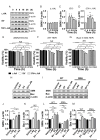
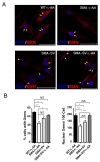

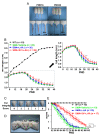

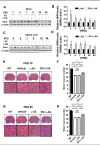
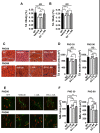
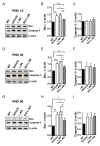
Similar articles
-
Fasudil improves survival and promotes skeletal muscle development in a mouse model of spinal muscular atrophy.BMC Med. 2012 Mar 7;10:24. doi: 10.1186/1741-7015-10-24. BMC Med. 2012. PMID: 22397316 Free PMC article.
-
Loganin possesses neuroprotective properties, restores SMN protein and activates protein synthesis positive regulator Akt/mTOR in experimental models of spinal muscular atrophy.Pharmacol Res. 2016 Sep;111:58-75. doi: 10.1016/j.phrs.2016.05.023. Epub 2016 May 27. Pharmacol Res. 2016. PMID: 27241020
-
SAHA ameliorates the SMA phenotype in two mouse models for spinal muscular atrophy.Hum Mol Genet. 2010 Apr 15;19(8):1492-506. doi: 10.1093/hmg/ddq023. Epub 2010 Jan 22. Hum Mol Genet. 2010. PMID: 20097677
-
Time Is Motor Neuron: Therapeutic Window and Its Correlation with Pathogenetic Mechanisms in Spinal Muscular Atrophy.Mol Neurobiol. 2018 Aug;55(8):6307-6318. doi: 10.1007/s12035-017-0831-9. Epub 2018 Jan 2. Mol Neurobiol. 2018. PMID: 29294245 Review.
-
Advances in modeling and treating spinal muscular atrophy.Curr Opin Neurol. 2016 Oct;29(5):549-56. doi: 10.1097/WCO.0000000000000368. Curr Opin Neurol. 2016. PMID: 27472505 Free PMC article. Review.
Cited by
-
Spinal muscular atrophy: an update on therapeutic progress.Biochim Biophys Acta. 2013 Dec;1832(12):2180-90. doi: 10.1016/j.bbadis.2013.08.005. Epub 2013 Aug 27. Biochim Biophys Acta. 2013. PMID: 23994186 Free PMC article. Review.
-
Motor Neuron Gene Therapy: Lessons from Spinal Muscular Atrophy for Amyotrophic Lateral Sclerosis.Front Mol Neurosci. 2017 Dec 7;10:405. doi: 10.3389/fnmol.2017.00405. eCollection 2017. Front Mol Neurosci. 2017. PMID: 29270111 Free PMC article. Review.
-
Systemic administration of a recombinant AAV1 vector encoding IGF-1 improves disease manifestations in SMA mice.Mol Ther. 2014 Aug;22(8):1450-1459. doi: 10.1038/mt.2014.84. Epub 2014 May 12. Mol Ther. 2014. PMID: 24814151 Free PMC article.
-
Drug Screening and Drug Repositioning as Promising Therapeutic Approaches for Spinal Muscular Atrophy Treatment.Front Pharmacol. 2020 Nov 12;11:592234. doi: 10.3389/fphar.2020.592234. eCollection 2020. Front Pharmacol. 2020. PMID: 33281605 Free PMC article. Review.
References
-
- Lefebvre S, Burglen L, Reboullet S, Clermont O, Burlet P, Viollet L, Benichou B, Cruaud C, Millasseau P, Zeviani M, Pasiler D, Frézal J, Cohen D, Weissenbach J, Munnich A, Melki J. Identification and characterization of a spinal muscular atrophy-determining gene. Cell. 1995;80:155–165. doi: 10.1016/0092-8674(95)90460-3. - DOI - PubMed
Publication types
MeSH terms
Substances
LinkOut - more resources
Full Text Sources
Other Literature Sources
Medical
Research Materials

